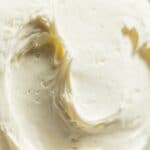Briefly, yes, you can freeze celery for cooking purposes, but the texture will change and it may not be suitable for fresh salads. Blanching the celery before freezing is recommended to help preserve its color, texture, and taste.
Celery is generally known as a crispy green salad ingredient, but it can also be used on snack platters with a dip, in tuna salad, in stews, soups, sauces, casseroles, and in a stir fries.
A bunch of celery can easily be too much to use for one or two dishes. The good news is that you can extend the shelf life of celery by freezing it and avoid wasting the remaining stems.
Here is a full guide to freezing celery for the best preservation of taste, color, and texture.
Can Celery Be Frozen?
Yes, raw celery can be frozen successfully for cooking purposes, however, the change in texture when you thaw celery will not be appetizing to use as a fresh salad ingredient. The length of time you can store celery in the freezer will largely depend on the way you prepare it beforehand.
As with most fresh vegetables, it is best to blanch celery before freezing. Blanching is the process of pre-treating the celery in boiling water to stop ripening enzymatic activity which will eventually result in less vibrant color, poor texture, and a slightly bitter taste.
If unblanched, the natural enzymatic activity will slow down, but still continue when frozen.
Unblanched celery that has been frozen will still be good to eat, but the quality will not be as vibrant and it won’t last nearly as long.
How To Freeze Celery
Celery maintains the best quality in the freezer when blanched. Follow this step by step guide for the best preservation of your greens.
Step 1: Sort
Sort the raw celery stalks and choose the best stems from the bunch. Crisp stems that do not have coarse strings are best for freezing.
Step 2: Wash
Wash the fresh celery thoroughly to remove any sand, chemicals, or bugs. To ensure they are properly clean, soak them in salt or vinegar water. Fill a bowl with cold water and add 1 to 2 tablespoons of salt or vinegar. Leave the celery in the water for a few minutes and rinse well.
Step 3: Cut
Trim the celery stems and remove any coarse strings that are hanging off the edges. Cutting the celery after freezing may be challenging so it is best to cut the stalks into smaller pieces now.
If you are not sure what you will be using the celery for later, chop them in 1 to 2 cm pieces as this should work well for most cooking recipes.
Step 4:
Option 1: Flash Freeze (without blanching)
Flash freezing the celery will prevent the pieces from sticking together and make it easier to just remove as much as you need from the freezer at any given time. If you are freezing the cut celery without blanching you will need to use the celery within one to two months.
Using a clean kitchen towel, pat the stalks to make sure they are completely dry. Spread the chopped pieces out on a baking sheet lined with parchment paper. Keep them in a single layer so they don’t touch. Place the baking sheet into the freezer for an hour or two.
Working quickly, remove the sheet from the freezer and move onto step 6 so that the celery does not have enough time to start defrosting before packing and placing it back in the freezer.
Option 2: Blanch
Heat a large pot of water till boiling. While the water is heating up, fill a separate bowl with ice water. Add chopped celery to the pot of boiling water for three minutes only.
Immediately transfer the celery to the bowl of ice water to stop the cooking process. You do not want the celery pieces to cook, the aim is just to kill the ripening enzymes for preservation purposes and immediately stop the cooking process by submerging it into the ice bath.
Step 5: Dry
Once cold (3 minutes should be sufficient), drain the blanched celery with a colander, sieve, or slotted spoon. Dry the celery pieces with a clean kitchen towel to remove as much moisture as possible. Excess moisture will form crystals on freezing causing textural damage.
Step 6: Pack
Divide the celery into portion sizes that you may need for cooking and pack each portion into a resealable freezer bag. Lie the bag flat and gently squeeze out all the air before sealing.
Step 7: Label and Freeze
Write the date of freezing on the freezer bags before placing it in the freezer so you know how long the celery has been stored.
How To Thaw Frozen Celery
Since frozen raw celery is only really good for adding to cooked dishes, you can add it to your soups, stews, casseroles, or curry straight from the freezer without thawing it.
Frozen celery will, however, defrost quickly at room temperature. Simply remove the packet from the freezer 5 or 10 minutes before cooking to thaw.
Types of Celery
Celery comes in a bunch of long, thick, light green stalks that branch out into leaves towards the top end. Celery stalks and leaves can both be eaten and celery seed is often used as a spice.
Stalk celery, also known as Pascal, is the most common type of celery available in grocery stores and is used mainly for salads, sauces, soups, and stews.
Two less common types of celery are celeriac and leaf celery. Celeriac is grown for its big bulbous root which is peeled and can be eaten raw or cooked. Leaf celery has thin stalks and is grown mainly for the use of its aromatic leaves and seeds.
FAQs
Conclusion
Keeping celery frozen saves a whole lot of prep time and prevents food wastage. Blanching celery before freezing may require a bit more effort, however, you will score 8 to 10 additional months of shelf life in the freezer with better color and texture.
When you’re ready to cook your favorite recipes, simply pull your bag of chopped celery out the freezer and toss it in with a casserole, stew, or soup. No mess, no fuss.
Up Next: Can You Freeze Kale?

Image by stockasso/depositphotos









